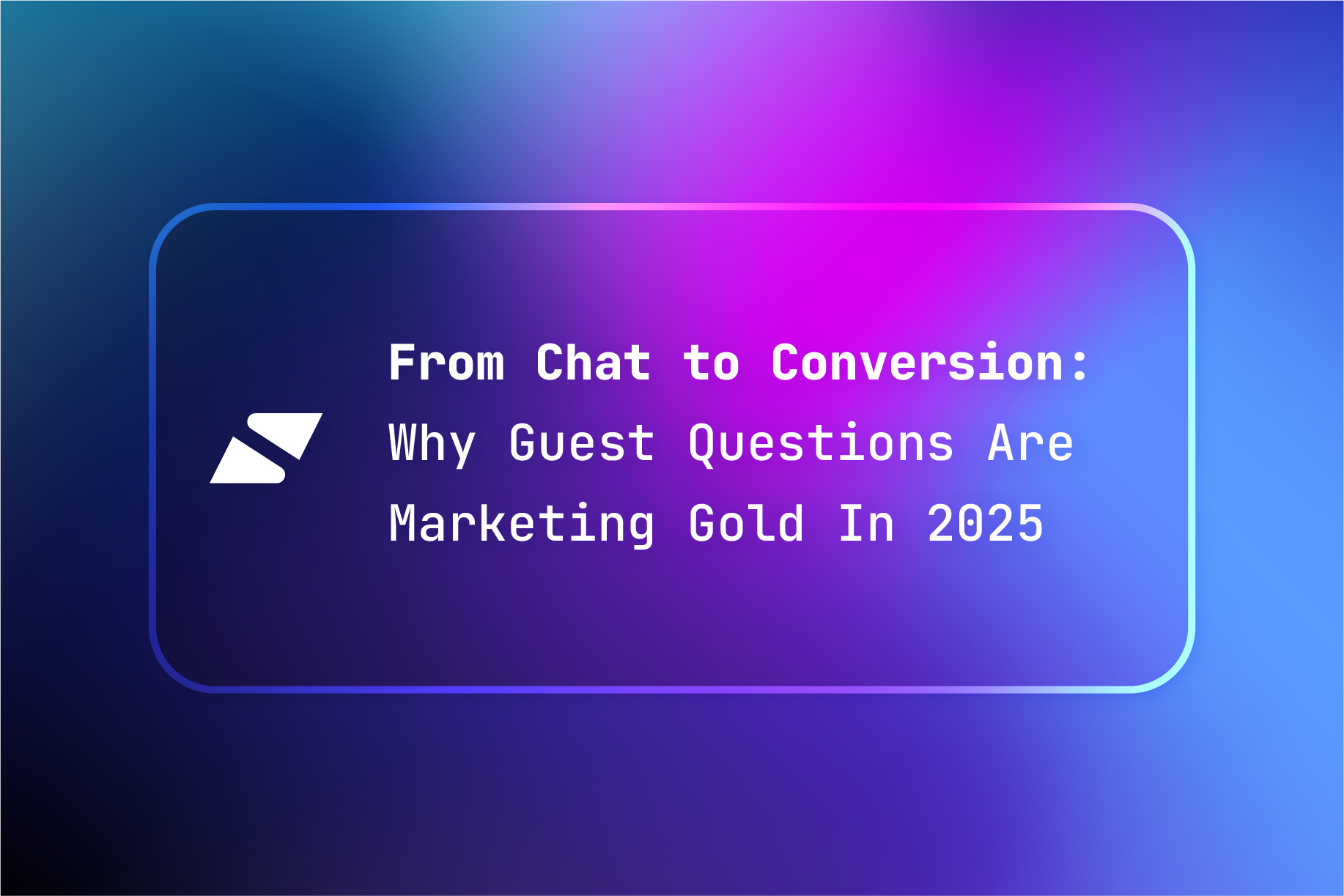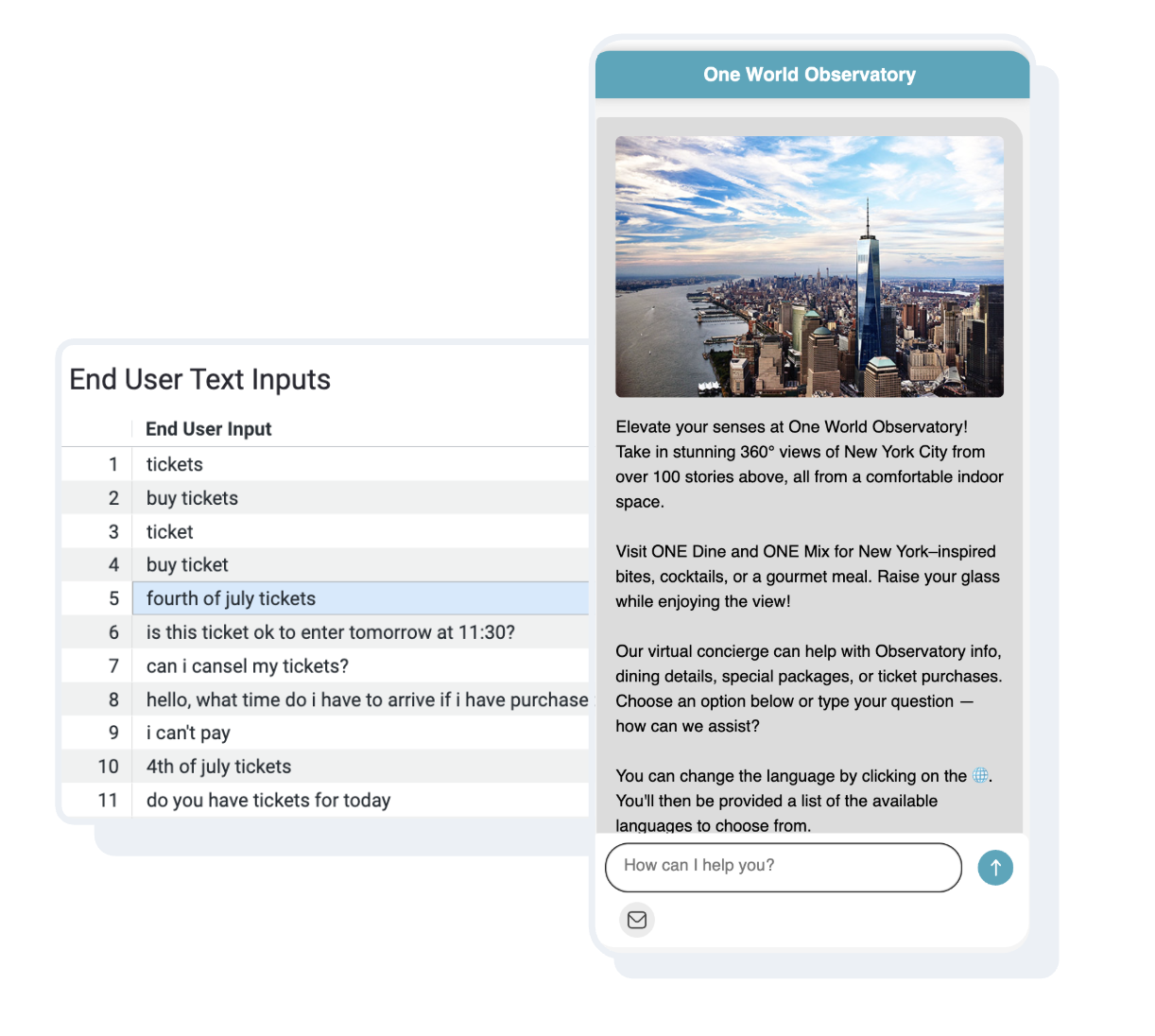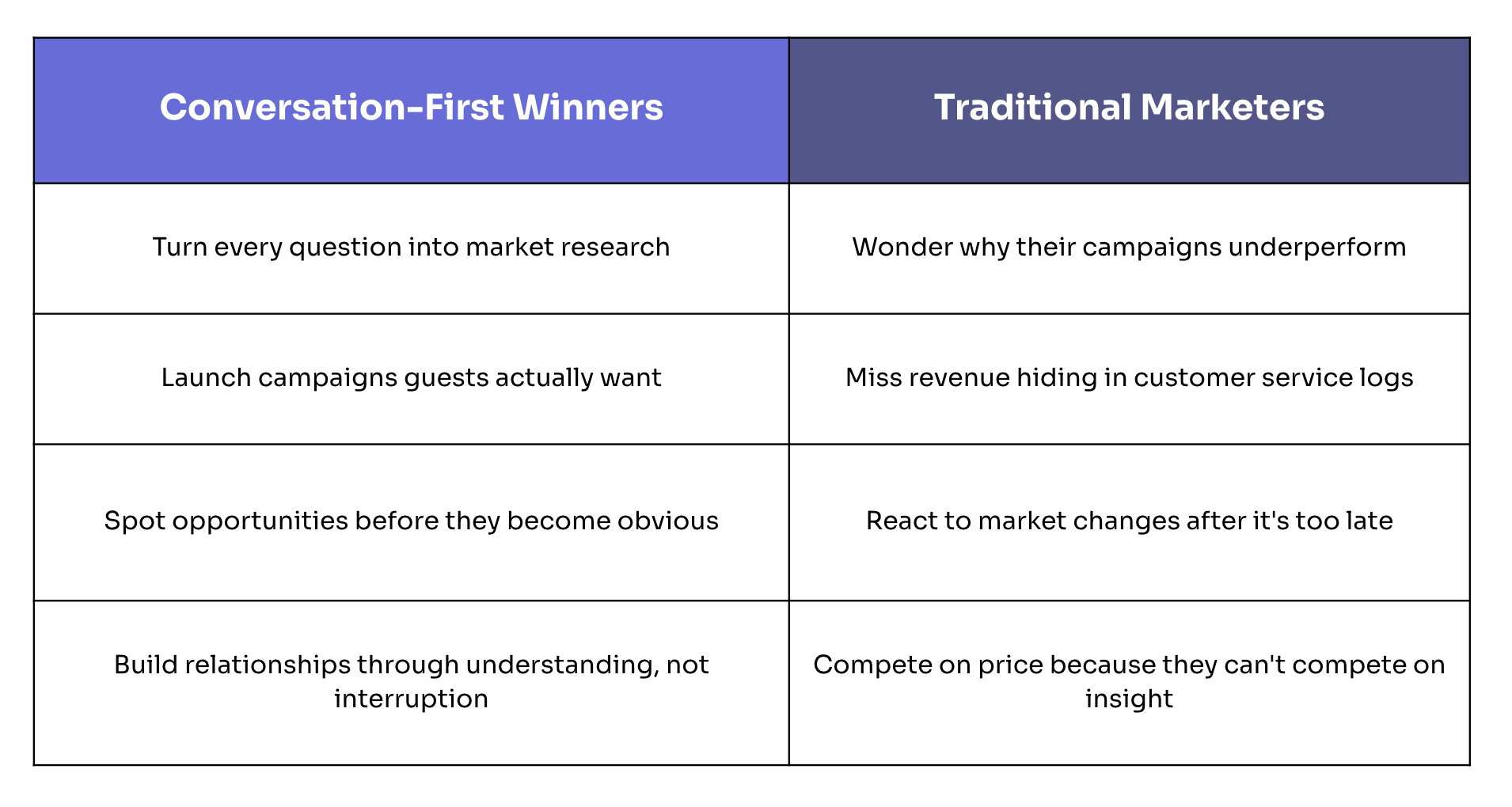From Chat to Conversion: Why Guest Questions Are Marketing Gold In 2025

The marketing funnel as we knew it is dead. In 2025, the path from awareness to purchase no longer follows predictable steps through websites, email campaigns, and traditional touchpoints. Instead, it happens in real-time conversations where guests, fans, and customers directly tell you what they want, need, and will pay for.
Yet most organizations are treating these conversations as customer service expenses rather than marketing goldmines. Every "What time do you close?" and "Do you have ADA parking?" isn't just a question, it's zero-party data that reveals intent, preferences, and opportunities that traditional analytics simply cannot capture.
Why 2025 is the Tipping Point for Conversational Data
Traditional marketing data tells you what people did. Conversational data tells you what they want to do and why.
In a world where third-party cookies are disappearing and privacy regulations are tightening, conversational data represents the most valuable intelligence you can gather: information that customers willingly share because they want something from you.
Consider the difference:
- Website analytics show that 1,000 people visited your pricing page
- Chat data reveals that 47 people asked about group discounts, 23 inquired about military pricing, and 15 wanted to know about seasonal promotions
Which insight drives more revenue? The answer is obvious, yet most organizations are still optimizing for pageviews instead of conversations.
Understanding Zero-Party Data: The Foundation of Modern Marketing
Zero-party data is information that customers intentionally and proactively share with you. Unlike first-party data (what you observe) or third-party data (what you purchase), zero-party data comes directly from the source, willingly given because the customer wants something in return.
Examples of zero-party data:
- "I’m looking for the Colts home games schedule"
- "We're traveling with a baby for the first time"
- "I need wheelchair accessible seating"
- "Interested in Monster Jam show in LA"

Why zero-party data is superior: Zero-party data transforms your current data. When you know someone asked about "kid-friendly activities," their subsequent booking of a family package is the completion of an expressed intent.
Real Client Success: When Data Drives Campaigns
The Bahamas Tourism Breakthrough
The Bahamas Ministry of Tourism discovered something remarkable in their chat data: guests were expressing specific needs that traditional booking data never captured. Data revealed that families were asking about activities for different age groups, and couples were inquiring about romantic, adults-only experiences.

The campaign response: Based on these conversational insights, they launched two targeted campaigns:
- "Summer Family Escape" addressing the specific family activity questions
- "Summer Baecation" responding to couples' romantic getaway inquiries
The results were extraordinary:
- Summer Family Escape: 30.20% email open rate (vs. 20-25% industry standard)
- Summer Baecation: 27.6% email open rate
- Landing page conversions: 22% and 18% respectively (vs. 2-5% industry average)
The campaigns didn't just perform well, they shattered industry benchmarks by using the actual language and addressing the real needs expressed in conversations.
One World Observatory: From Data Discovery to Sold-Out Events
One World Observatory has been partnering with Satisfi Labs for 6 years. In 2024, One World Observatory's chat data revealed an unexpected opportunity. Analysis of conversation logs showed a significant spike in inquiries about "4th of July viewing" and questions about special events during Independence Day.

The insight: Guests weren't just asking about regular admission, they were specifically interested in experiencing July 4th from the Observatory's unique vantage point.
The 2025 response: Armed with this intelligence, One World Observatory created dedicated 4th of July programming and events.
The results:
- 6X increase in July 4th-related inquiries in 2025
- Sold-out events through strategic chat messaging and positioning
- Enhanced revenue from what became their most successful special event
The key wasn't just creating the event, it was using conversational data to understand demand, craft messaging, and position the offering exactly how guests were already thinking about it.
The Moment of Truth: Act Now or Fall Behind
Every day you're not capturing conversational intelligence, your competitors are building an insurmountable lead. The organizations winning in 2025 aren't just better at marketing, they're better at listening.

The Bottom Line
Your customers are telling you exactly what they want, when they want it, and how to sell it to them. The only question is whether you're listening.
In 2025, marketing is about who pays the closest attention to what people actually say when they think no one is listening.
Every conversation is market research. Every question is a content opportunity. Every hesitation is a conversion insight.

